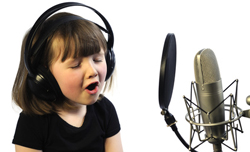 “Home recording for non-engineers” is just my way of saying that it does not have to be hard or expensive for just about anyone to do it.
“Home recording for non-engineers” is just my way of saying that it does not have to be hard or expensive for just about anyone to do it.
Now, before I jump into the wonders of home audio recording, allow me to state up front.
I have a Bachelor of Science degree and a Masters degree. I mention this to you not because I’m trying to brag or anything. Why am I telling you this? I only mention it because….wait for it…..reading about audio recording STILL makes my brain hurt!
Why Is It So Hard To Understand?
I’ve been doing it for, well let’s just say more than 2 decades and leave it at that. It’s how I make a living. And usually, whenever I see some tutorial on the web or an article in a trade magazine about audio recording, my eyes start to laze over and I feel like I’m going to slip into a coma. What gives?!
I got to thinking that if I react this way, how must it feel for someone who is just starting out with home audio recording? Someone who doesn’t have enough money to go to recording school or enough time, or both must rely on the mercy of book, article, and tutorial writers to gain their knowledge. And unless you just happen to be an electrical engineer or a music major (preferably both…apparently), one look at most of the literature on how to get started in home recording will probably put you off your lunch.
Audio Recording Is Easier Than You Think
I happen to believe that home recording is much, much, much, much (getting the idea?) easier to understand than most experts make it out to be. If you follow the brief instructions I’m about to give you, you’ll be able to make an audio recording in the next few minutes! This assumes you have a computer and something to use as a microphone, even one of those plastic PC mics will do. If you don’t have the mic yet, then tack on the time it’ll take you to dash to the store and pick one up for $5.00 or so. Ready?
- Download and install the open-source (free!) program called “Audacity” from their website at Sourceforge. If you just put “Audacity” software into Google, you’ll find it. (update: if you don’t mind paying $60 for incredible software, try Reaper in place of Audacity).
- Find the little hole with a pink circle around it on your computer sound card. It should be right next to the little hole with a green circle where your speakers are probably plugged in. Plug the microphone into the pink hole. (Update: Though this tip is still valid, you can get much better quality by using a USB mic – especially one like the $75 Samson C01U)
- Open Audacity or Reaper.
- Click on the button with the big red circle on it (that means “record”).
- Put the microphone close to your lips and talk into it.
- Click the button in Audacity with the large square on it to “stop” the recording (or the smaller Stop button on the bottom left of Reaper).
Is that It?
That’s it! You just made a recording and didn’t need a degree in math or engineering to do it.
Is there a lot more to learn? Uh-huh. Can it be taught as easily as the above? Yup, I think so. So if you’re looking for guidance on setting up a home recording studio, whether you want to do voice-overs, narrate an audio book, produce a podcast, or record music, don’t frustrate yourself trying to decipher the “how-to” articles and tutorials out there that are hyped up on jargon and “engineer-ese.” Find the ones that make it easy and fun.
They are out there – well most of them are here:). Good luck and have fun!
Oh, and if you’d like to get an idea of what our courses are like, click below to get some free videos to see how great they are (if we do say so ourselves):).

Leave a Reply